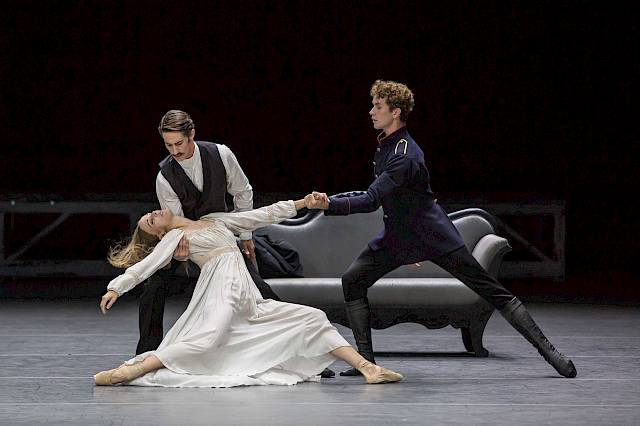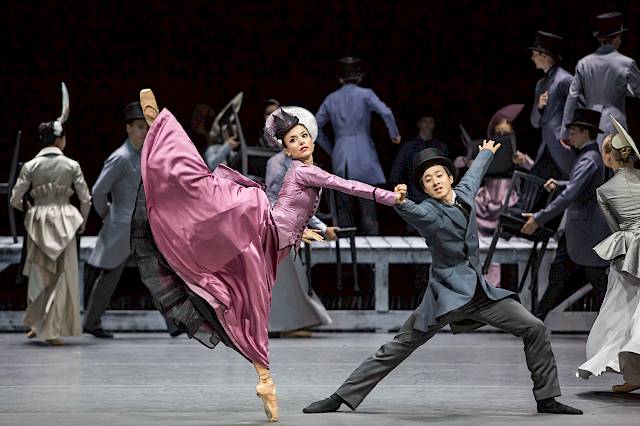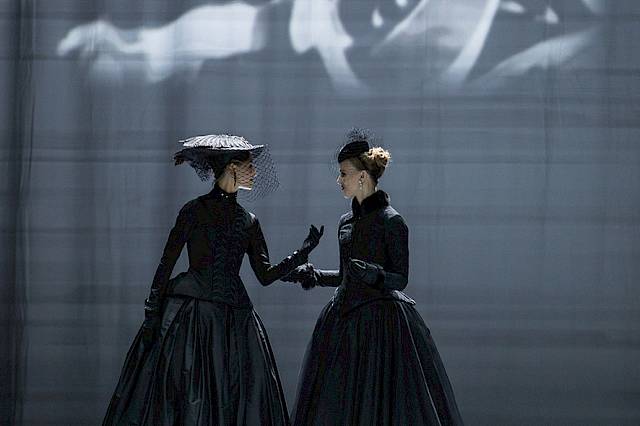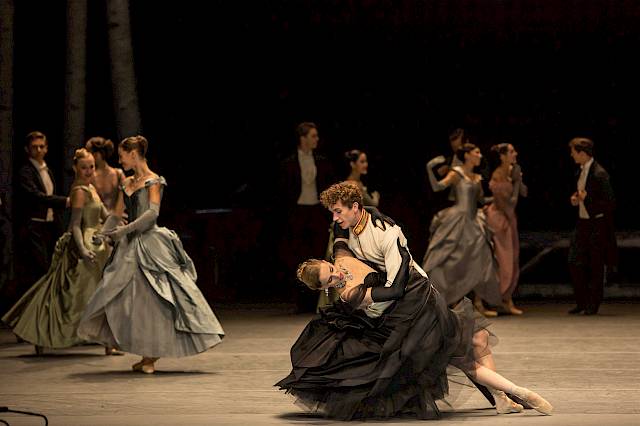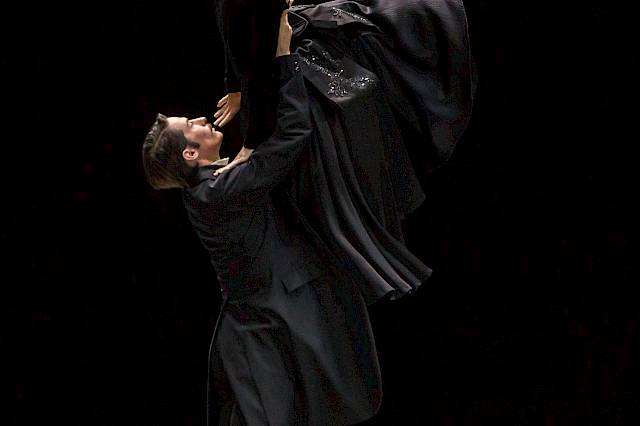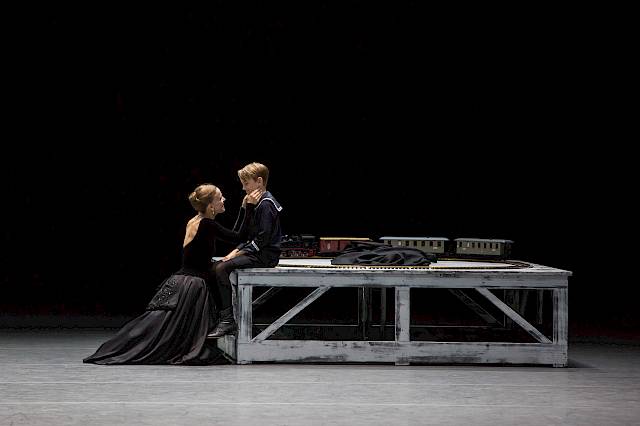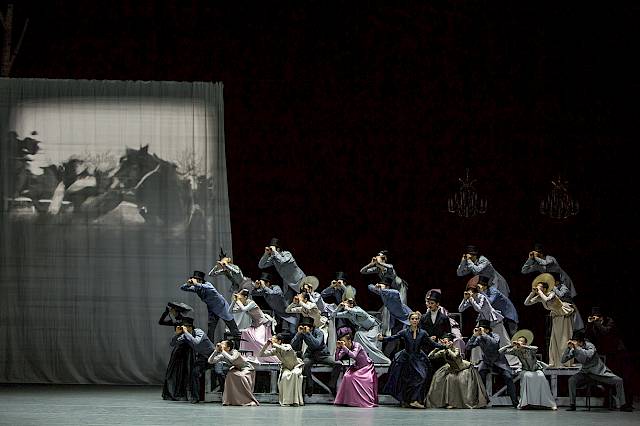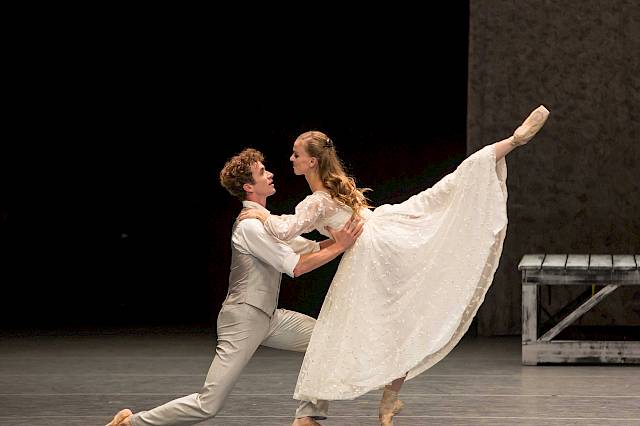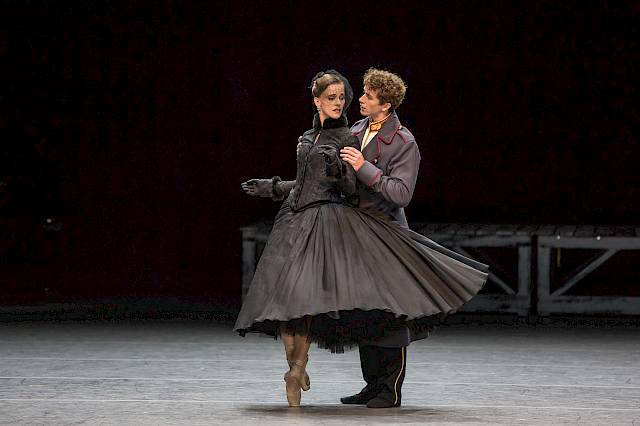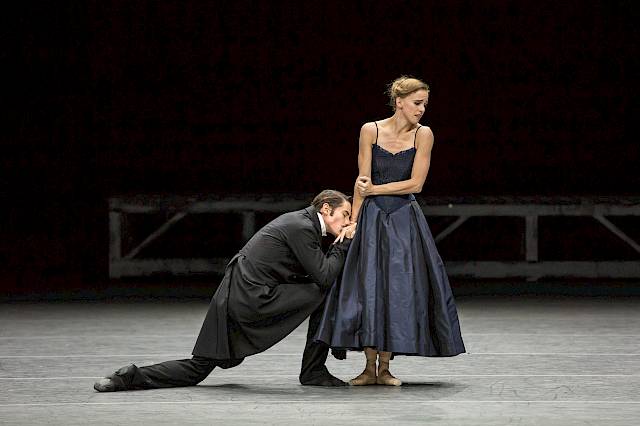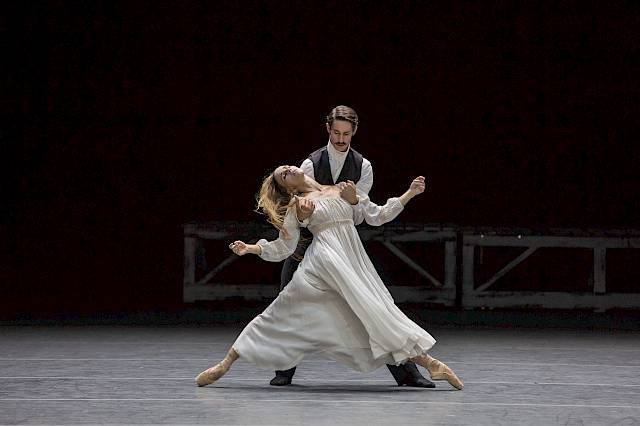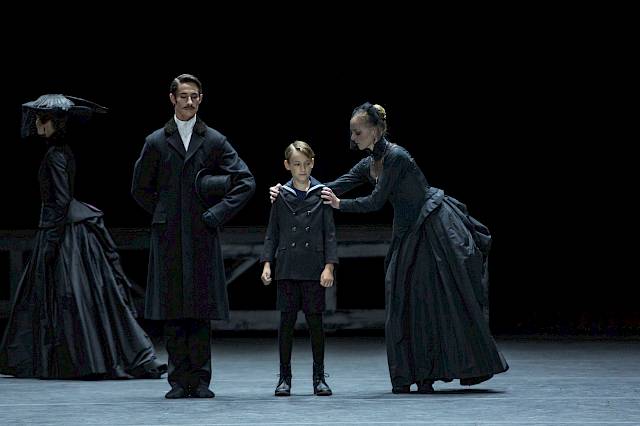Anna Karenina
Ballet by Christian Spuck
After the eponymous novel by Leo Tolstoy (1828-1910)
Music by Sergei Rachmaninoff, Witold Lutosławski, Sulkhan Tsintsadze and Josef Bardanashvili
Duration 2 H. 10 Min. incl. intermission after 1st part after approx. 1 H. Introduction 45 min before the performance.
A co-production with Den Norske Opera & Ballett / Nasjonalballetten, Oslo.
Past performances
October 2014
November 2014
December 2014
January 2015
Good to know
Anna Karenina
Synopsis
Anna Karenina
Prologue
Martin Donner: Trains I
Sergei Rachmaninoff: Moment musical op. 16 no. 3 B minor
Salon I
Stiva Oblonski is cheating on his wife Dolly with the female maids. Kitty Shcherbatskaya is being pursued by landowner Konstantin Levin, who has come to town specifically for this purpose.
Sergei Rachmaninoff: Symphonic Dances op. 45,
2. Andante con moto (Tempo di Valse)
Arrival in Moscow
Anna Karenina has come to Moscow from St. Petersburg where she intends to mediate between Stiva and Dolly. Stiva is waiting for Anna on the platform, while her travelling acquaintance, Countess Vronskaya, is being collected by her son Alexei. Anna Karenina and Alexei Vronsky are introduced to one another, and this first sighting remains unforgettable for both.
Witold Lutosławski: Novelette for Orchestra, No. 1 Announcement
The ball
Levin asks for Kitty’s hand in marriage and she turns him down. She is infatuated with Vronsky, and is hoping he will propose to her. However, Vronsky’s only desire is to see Anna Karenina again at the ball. When Anna appears and Vronsky only has eyes for her, Kitty’s world falls apart. Anna realises that she is the reason for Kitty’s destroyed hopes and leaves.
Sergei Rachmaninoff:
Symphonic Dances op. 45, 2. Andante con moto (Tempo di Valse)
To St. Petersburg
Vronsky follows Anna to St. Petersburg. They become closer during the journey. In St. Petersburg, Anna Karenina is collected by her husband Alexei and their son Seryozha.
Sergei Rachmaninoff: Rhapsody on a Theme of Paganini op. 43 for piano and orchestra, Variation 12 Martin Donner: Trains II
In the country I
After his refused proposal, Levin flees to the solitude of his estate and avoids society.
Sergei Rachmaninoff (Arr.: Christophe Barwinek):
Noch' pechal'na, op. 26 No. 12 (The Night is Sad)
Betsy’s salon
The salon of Betsy Tverskaya, a friend of Anna’s, is the meeting point of the decadent Petersburg society. While Dolly and Stiva continue to argue here, Anna and Vronsky enjoy their reunion. When Karenin turns up to collect his wife, she refuses to go home with him. The Karenins are the subject of much discussion in the salon: A shadow has been cast over Anna’s reputation – Vronsky.
As society becomes more distant, Anna and Vronsky’s passion for one another can no longer be assuaged. Vronsky’s love allows Anna to forget the feelings of guilt and shame about the breakdown of her marriage.
Sergei Rachmaninoff: Piano Concert no. 2 c-minor op. 18, 3rd movement
Witold Lutosławski: Chain 3 for Orchestra, III. 38
Horse racing
The distinguished society meets at a horse race, including the Karenins, the Oblonskis, Betsy and Countess Vronskaya. The fact that Anna screams when Vronsky falls with his horse is proof of her unfaithfulness for Karenin and those present. Karenin demands the fulfilment of marital obligations from Anna.
Sergei Rachmaninoff: Rhapsody on a Theme of Paganini op. 43,
Variations no. 8 and no. 9
Witold Lutosławski: Piano concert, 2nd movement
In the country II
Levin takes part in haymaking, forgets his heartache and finds new meaning in life in the shared work with his farmers.
The transformed Kitty comes to the country, and she and Levin become closer to one another.
Martin Donner: Sensen
Sergei Rachmaninoff (Arr.: Christophe Barwinek):
Ne poy, krasavitsa! op. 4 no. 4 (Don’t sing, beautiful)
At the home of the Karenins
After the birth of Vronsky’s daughter, Anna is under threat of death. This situation causes Karenin to forgive her and his love rival. Vronsky, who fears that Anna will return to her husband, attempts suicide.
Sergei Rachmaninoff (Arr.: Christophe Barwinek):
Rhapsody on a Theme of Paganini op. 43, Variation 17
Witold Lutosławski: Piano Concert, 1st Movement
Break
Prelude:
Witold Lutosławski: Novelette for Orchestras, no. 1 Announcement
Italy/Russia
Vronsky is in Italy with Anna. She has left her old life behind - including Seryozha. Vronsky has given up his career in the military for her. They enjoy their abundance of happiness as a pair, but soon Anna misses her son, while Vronsky misses life in society. They return to Russia. Dolly appears to have come to terms with remaining at the side of the notoriously unfaithful Stiva.
Sergei Rachmaninoff: Piano Concert no. 2 c minor op. 18, 2nd Movement
Wedding
Kitty and Levin have come together and marry.
Sulkhan Tsintsadze (Arr.: Christophe Barwinek):
Miniatures for String Quartet, 5th harmony
Seryozha’s birthday
In secret, Anna visits her son Seryozha, who is now being looked after by the confidante of the Karenins, Lidia Ivanovna. They both bring the reunion of mother and son to an abrupt end. Anna and Karenin have a heated discussion, after which Anna remains alone and shattered.
Sergei Rachmaninoff: Prelude C-sharp minor op. 3 no. 2
Loneliness I
Anna is devastated. She now doubts Vronsky’s faithfulness and tries to numb her pain and jealousy with opium.
Sergei Rachmaninoff (Arr.: Christophe Barwinek):
Uvyal tsvetok o. op. (The flower is withered; Text page 74)
Isolation
While Vronsky is able to continue to take part in public life, Anna is perceived as an adulteress and is shunned by and cut off from society. Even her once friend Betsy turns away from her. Her jealousy and delusions turn obsessive, and she suspects that Princess Sorokina, who Countess Vronskaya has chosen for her son, is a love rival.
Witold Lutosławski: Novelette for Orchestra, No. 2 First Event
Witold Lutosławski: Novelette for Orchestra, No. 1 Announcement
Sergei Rachmaninoff: Prelude F-sharp minor op. 23 No.1
Loneliness ll/Anna’s death
All relationships and ties have dissolved for Anna, and Vronsky is also no longer a reason for her to stop. She kills herself.
Josef Bardanashvili: Concerto quasi una fantasia, 2. Sostenuto
Sergei Rachmaninoff: Ne poy, krasavitsa! op. 4 No. 4 (Prelude)
Biographies
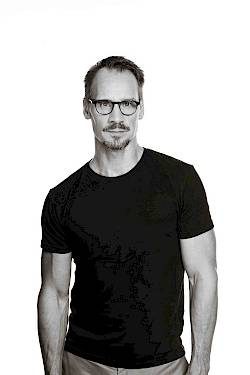
Christian Spuck,
Christian Spuck
Christian Spuck stammt aus Marburg und wurde an der John Cranko Schule in Stuttgart ausgebildet. Seine tänzerische Laufbahn begann er in Jan Lauwers’ Needcompany und Anne Teresa de Keersmaekers Ensemble «Rosas». 1995 wurde er Mitglied des Stuttgarter Balletts und war von 2001 bis 2012 Hauschoreograf der Compagnie. In Stuttgart kreierte er fünfzehn Uraufführungen, darunter die Handlungsballette Lulu. Eine Monstretragödie nach Frank Wedekind, Der Sandmann und Das Fräulein von S. nach E.T.A. Hoffmann. Darüber hinaus hat Christian Spuck mit zahlreichen namhaften Ballettcompagnien in Europa und den USA gearbeitet. Für das Königliche Ballett Flandern entstand 2006 The Return of Ulysses, beim Norwegischen Nationalballett Oslo wurde Woyzeck nach Georg Büchner uraufgeführt. Das Ballett Die Kinder beim Aalto Ballett Essen wurde für den «Prix Benois de la Danse» nominiert, das ebenfalls in Essen uraufgeführte Ballett Leonce und Lena nach Georg Büchner wurde von den Grands Ballets Canadiens de Montréal, dem Charlotte Ballet, USA, dem Tschechischen Nationalballett Prag und vom Stuttgarter Ballett übernommen. Die Uraufführung von Poppea//Poppea für Gauthier Dance am Theaterhaus Stuttgart wurde 2010 von der Zeitschrift «Dance Europe» zu den zehn erfolgreichsten Tanzproduktionen weltweit gewählt sowie mit dem deutschen Theaterpreis Der Faust 2011 und dem italienischen «Danza/Danza-Award» ausgezeichnet. Christian Spuck hat auch Opern inszeniert: Auf Glucks Orphée et Euridice an der Staatsoper Stuttgart folgten Verdis Falstaff am Staatstheater Wiesbaden sowie Berlioz’ La Damnation de Faust und Wagners Fliegender Holländer an der Deutschen Oper Berlin. Von 2012 bis 2023 war Christian Spuck Direktor des Balletts Zürich. Hier waren seine Choreografien Romeo und Julia, Leonce und Lena, Woyzeck, Der Sandmann, Messa da Requiem, Nussknacker und Mausekönig, Dornröschen und Monteverdi zu sehen. Das 2014 in Zürich uraufgeführte Ballett Anna Karenina nach Lew Tolstoi wurde in Oslo, am Moskauer Stanislawski-Theater, vom Koreanischen Nationalballett und vom Bayerischen Staatsballett ins Repertoire übernommen. 2018 hatte in Zürich Spucks Ballett Winterreise Premiere, für das er mit dem «Prix Benois de la Danse 2019» ausgezeichnet wurde. 2019 folgte beim Ballett Zürich Helmut Lachenmanns Das Mädchen mit den Schwefelhölzern (Auszeichnung als «Produktion des Jahres und Kompanie des Jahres für das Ballett Zürich durch die Zeitschrift tanz). Für das Moskauer Bolschoitheater kreierte er 2021 sein Ballett Orlando nach Virginia Woolf. Spucks Messa da Requiem wurde nicht nur zum Adelaide Festival nach Australien eingeladen, sondern auch vom Het Nationale Oper & Ballet Amsterdam und vom Finnischen Nationalballett übernommen. Seit Beginn der Saison 2023/24 ist Christian Spuck Intendant des Staatsballetts Berlin.
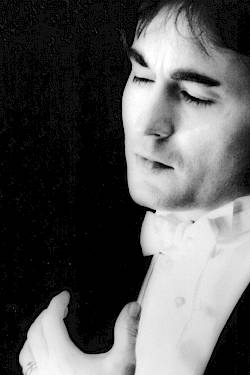
Paul Connelly,
Paul Connelly
Paul Connelly debütierte 23-jährig als Dirigent mit Gershwins Porgy and Bess im Rahmen einer Tournee der Houston Grand Opera. 1980 wurde er auf Einladung von Michail Baryshnikov Erster Kapellmeister des American Ballet Theatre und arbeitete dort mit Choreografen wie Jerome Robbins, George Balanchine und Anthony Tudor. Während dieser Zeit dirigierte er auch Vorstellungen des New York City Ballet sowie Gala-Veranstaltungen wie Nureyev and Friends und Baryshnikov and Co., ausserdem war er Gastdirigent beim National Ballet of Canada. Während der Zeit beim ABT war er an zahlreichen Film- und Fernsehprojekten beteiligt (u.a. Don Quixote). Zu seinen Opernaktivitäten in dieser Zeit gehören Brittens Death in Venice, Debussys Pelléas et Mélisande sowie Purcells Dido and Aeneas. Nach der musikalischen Leitung einer Ballettgala an der Wiener Staatsoper wurde ihm dort Rossinis Barbiere di Siviglia anvertraut, ein Erfolg, der den Anfang einer intensiven Dirigententätigkeit in Europa markiert. Einladungen führten ihn zum Staatsballett Berlin, das Ballett der Opéra Paris (Verfilmungen von Neumeiers Sylvia, Balanchines Jewels, Giselle, Roland-Petit-Abend), zum Orchestre Colonne in Paris, an das Opernhaus Nizza, ans Teatro di San Carlo in Neapel, an die Oper Oslo, zum Royal Ballet in London und in Birmingham, zum Het Nationale Ballet in Amsterdam, zum Tokyo Ballet, zum Semperoper Ballett Dresden und an die Mailänder Scala, wo er auf Einladung von Riccardo Muti die Opern Il turco in Italia, Die Zauberflöte und Don Giovanni dirigierte. An der Scala leitete er auch eine Reihe von Ballettaufführungen, unter anderem Giselle, die auch verfilmt wurde. Auf DVD erschienen Mauro Bigonzettis Caravaggio mit dem Staatsballett Berlin und Nureyews Nussknacker mit dem Ballett der Wiener Staatsoper. Unlängst dirigierte er Kenneth MacMillans Mayerling an der Staatsoper Budapest. Geplant sind The Cellist von Cathy Marston beim Ballett Zürich sowie eine Neuproduktion von Coppélia in der Choreografie von Alexei Ratmansky an der Mailänder Scala.
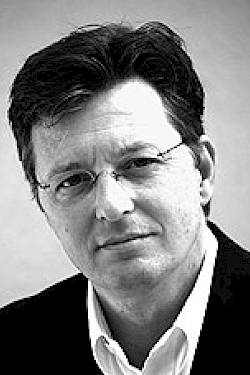
Jörg Zielinski,
Jörg Zielinski
Jörg Zielinskistammt aus Berlin und lebt seit 1991 in der Schweiz. Seine Ausbildung und sein Studium absolvierte er in Berlin, Basel und Zürich. Seine Produktionsleitung am Theater Basel und seine leitende Mitarbeit bei «The Really Useful Group» brachten ihm Erfahrungen mit internationalen Theaterproduktionen. Er arbeitete an der Expo.02 in Yverdon-les-Bains sowie bei der Rauminszenierung Hotel Offen in Baden mit. Seine Designerfahrungen sammelte er bei Vitra. Als Leiter des Ausstattungswesens am Opernhaus Zürich arbeitete er mit dem Shanghai Opera House zusammen. Aus dieser Zusammenarbeit entstanden Kontakte mit der National Academy of Chinese Theatre Arts in Peking und der Zürcher Hochschule der Künste, wo er zu Vorträgen eingeladen wurde. Im Rahmen eines Masterstudiums hält Jörg Zielinski Vorträge an der Hochschule der Künste Bern. Er entwirft und realisiert Bühnenbilder und szenische Einrichtungen. Es entstanden Entwürfe für das Opernhaus Zürich, das Zürcher Kammerorchester, das Londoner Studio «United Visual Artists» und diverse freie Projekte. Seine Fotos wurden international publiziert und ausgestellt.
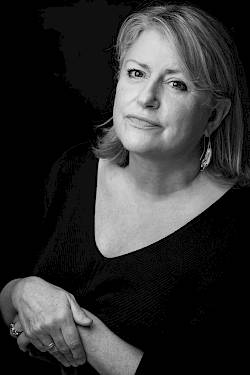
Emma Ryott,
Emma Ryott
Emma Ryott trained at Trent Polytechnic with a BA in Theatre Design. Ever since their first collaboration in 2003, Emma Ryott and Christian Spuck continued working together for ballet and opera productions, such as Lulu. Eine Monstretragödie in Stuttgart, Anna Karenina in Zurich, Oslo and Moscow, Romeo und Julia in Zurich, Woyzeck in Oslo and Zurich, Das Fräulein von S. in Stuttgart, Leonce und Lena in Montréal, Stuttgart und Zurich, Der Sandmann in Stuttgart und Zurich, Poppea / Poppea und Don Q. for Gauthier Dance, The Return of Ulysses for das Royal Ballet of Flanders, La Damnation de Faust at the Deutsche Oper Berlin, Falstaff in Wiesbaden and Orfeo ed Euridice in Stuttgart. She also works closely with director Keith Warner. Their collaborations include Mathis der Maler at Theater an der Wien, Manon Lescaut at the English National Opera as well as La Damnation de Faust and Harbison’s The Great Gatsby at the Semperoper Dresden. Other designs were created for Sunset Boulevard and Manon Lescaut (Goteborg), Otello (Salzburg), The Heart of Robin Hood for the Royal Shakespeare Company (awarded with Elliot Norton Award for outstanding design), Rock ‘n Roll by Tom Stoppard (London Royal Court, West End and Broadway), Chekhov-trilogy directed by Jonathan Kent (National Theatre, London) and the New Year’s Day Concert, Vienna, 2016.
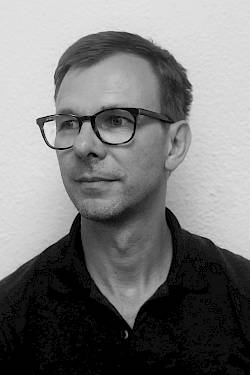
Martin Gebhardt,
Martin Gebhardt
Martin Gebhardt war Lichtgestalter und Beleuchtungsmeister bei John Neumeiers Hamburg Ballett. Ab 2002 arbeitete er mit Heinz Spoerli und dem Ballett Zürich zusammen. Ballettproduktionen der beiden Compagnien führten ihn an renommierte Theater in Europa, Asien und Amerika. Am Opernhaus Zürich schuf er das Lichtdesign für Inszenierungen von Jürgen Flimm, Grischa Asagaroff, Matthias Hartmann, David Pountney, Moshe Leiser/Patrice Caurier, Damiano Michieletto und Achim Freyer. Bei den Salzburger Festspielen kreierte er die Lichtgestaltung für La bohème und eine Neufassung von Spoerlis Der Tod und das Mädchen. Seit der Spielzeit 2012/13 ist Martin Gebhardt Leiter der Beleuchtung am Opernhaus Zürich. Eine enge Zusammenarbeit verbindet ihn heute mit dem Choreografen Christian Spuck (u. a. Winterreise, Nussknacker und Mausekönig, Messa da Requiem, Anna Karenina, Woyzeck, Der Sandmann, Leonce und Lena, Das Mädchen mit den Schwefelhölzern, Dornröschen). Er war ausserdem Lichtdesigner für die Choreografen Edward Clug (u.a. Strings, Le Sacre du printemps und Faust in Zürich; Petruschka am Moskauer Bolschoitheater), Alexei Ratmansky, Wayne McGregor, Marco Goecke und Douglas Lee. Mit Christoph Marthaler und Anna Viebrock arbeitete er beim Händel-Abend Sale, Rossinis Il viaggio a Reims und Glucks Orfeo ed Euridice in Zürich sowie bei Lulu an der Hamburgischen Staatsoper. 2020 gestaltete er das Licht an der Oper Genf für Les Huguenots in der Regie von Jossi Wieler und Sergio Morabito. 2021 folgte Christian Spucks Orlando am Moskauer Bolschoitheater und 2022 Don Giovanni am New National Theatre Toyko.
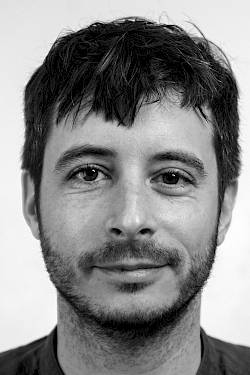
Tieni Burkhalter,
Tieni Burkhalter
Tieni Burkhalter studierte Bildende Kunst an der Zürcher Hochschule der Künste (ZHdK), wo er sich auf Video und Videoinstallation spezialisierte. Seine Werke wurden sowohl an Ausstellungen als auch an Experimentalfilmfestivals, u. a. der Videoex in Zürich und der Biennale de l’image en mouvement in Genf, gezeigt. Daneben war er als freier Mitarbeiter für das Schweizer Fernsehen sowie für verschiedene Filmagenturen als Kameramann und Ausstatter tätig und unterstützt bis heute zahlreiche Zürcher Galerien in Zusammenarbeit mit ihren Künstler:innen. Seit 2009 ist er als Videoproduzent für die Bühne tätig: Am Opernhaus Zürich waren seine Arbeiten bisher Teil von Der fliegende Holländer und Land des Lächelns (Andreas Homoki), A-Life (Choreografie: Douglas Lee), Anna Karenina und Das Mädchen mit den Schwefelhölzern (Christian Spuck), Pelléas et Mélisande und Die Sache Makropulos (Dmitri Tcherniakov), Faust (Edward Clug), Coraline (Nina Russi), Il trovatore (Adele Thomas) und Die Odyssee (Rainer Holzapfel). Für Dmitri Tcherniakov produzierte er ferner das Videodesign für Senza Sangue /Herzog Blaubarts Burg an der Staatsoper Hamburg, La Fille de Neige und Les Troyens an der Opéra National de Paris und Tristan und Isolde an der Staatsoper Unter den Linden in Berlin.
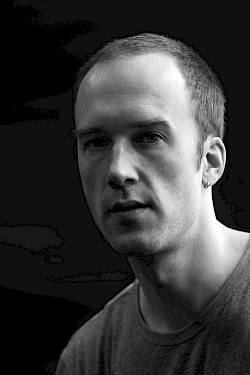
Martin Donner,
Martin Donner
Martin Donner, Jahrgang 1974, ist seit Mitte der neunziger Jahre als Komponist, Produzent und Musiker tätig. Musikalisch vielseitig interessiert, arbeitet er seit 2000 als freischaffender Künstler in verschiedenen Projekten und Formationen. Dabei setzte er sich intensiv mit der Ästhetik und Produktion elektronischer Musik auseinander. In Kooperation mit der Agentur «Publikmacher» baute er ein digitales Klangarchiv für das Internet auf und war von 2001-2003 Dozent für Audioproduktion an der Medienwerkstatt Stuttgart. Seit 2002 komponiert er regelmässig Musik für verschiedene internationale Theater und Tanzkompanien. Dabei arbeitete er mit Christian Spuck, Rene Pollesch und Hans Kresnik zusammen. Von 2004 bis 2010 lebte Donner in Berlin, wo er einem fortbildenden Studium der Kultur- und Medienwissenschaften an der Humboldt Universität nachging. In Folge entstanden neben seiner Musik auch theoretische Texte und Klanginstallationen. Seit 2010 lebt Donner wieder in Stuttgart.

Viktorina Kapitonova,
Viktorina Kapitonova
Viktorina Kapitonova, who is a native of Russia, studied at the Kazan Ballet School and Moscow’s Bolshoi Theatre Academy. The winner of both the Young Ballet of Russia competition and the Arabesque contest of 2008, from 2005 onwards she danced at the Jalil Opera House in Kazan, performing solo roles in Swan Lake, The Sleeping Beauty, Don Quixote, La Bayadère, Coppélia and The Nutcracker. She was a member of the Stanislavsky Ballet for the 2008/09 season; and she joined Ballett Zürich in 2010, since when her performances have included Odette/Odile in Heinz Spoerli’s Swan Lake, solos in Spoerli’s A Midsummer Night’s Dream, Wäre heute morgen und gestern jetzt, ...und mied den Wind and Goldberg Variations, Rosetta in Christian Spuck’s Leonce and Lena, the nurse in Spuck’s Romeo and Juliet and the leading role in Spuck’s Anna Karenina. She has also been seen in choreographies by Balanchine, Ek, Forsythe, Kylián, Lee, McGregor and Schläpfer. She presented her choreography Two Bodies – One Soul as part of the company’s Young Choreographers programme. As Giselle/Myrtha she was seen in Patrice Bart’s Giselle, alongside Roberto Bolle and Friedemann Vogel. She was also the recipient of the Friends of Ballett Zürich’s Dance Prize for 2015. Last season her roles included Odette/Odile in the reconstruction of Swan Lake by Alexei Ratmansky as well as Olimpia in Christian Spuck’s Der Sandmann.

Juliette Brunner,
Juliette Brunner
Juliette Brunner, who is a native of Switzerland, trained at the Theater Basel Ballet School, at Brenda Hamlyn’s ballet school in Florence, under Malou Fenaroli in Zurich and at the School of American Ballet in New York. After dancing with the Düsseldorf/Duisburg-based Ballett am Rhein, the Leipzig Ballet and the Monte Carlo Ballet, she joined Ballett Zürich for the 2007/08 season. Since then she has been seen in leading roles in numerous productions including Heinz Spoerli’s Peer Gynt, Bella Figura, Wäre heute morgen und gestern jetzt, Orma, Abschied and Don Juan, Mats Ek’s Sleeping Beauty and William Forsythe’s The Vertiginous Thrill of Exactitude. Most recently she has danced the title role in Christian Spuck’s Anna Karenina, Lady Capulet in his Romeo and Juliet and the governess in his Leonce und Lena, along with choreographies by Martin Schläpfer, Wayne McGregor and Marco Goecke.
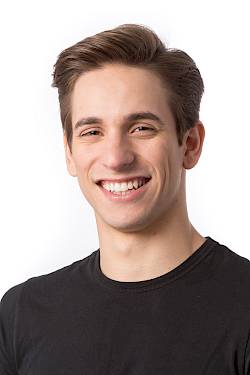
Denis Vieira,
Denis Vieira
Denis Vieira is from Brazil. A graduate of his home country’s Bolshoi Theatre School, he danced various roles for the Teatro Municipal in Rio de Janeiro including Onegin/Lensky in John Cranko’s Onegin, Romeo in Cranko’s Romeo and Juliet, Adam in Uwe Scholz’s Adam and Eve, Albrecht in Peter Wright’s Giselle and Prince Siegfried in Yelena Pankova’s Swan Lake. He joined Ballett Zürich in 2014, since when he has been seen in Schläpfer’s Forellenquintett, Kylián’s Wings of Wax, Kairos by Wayne McGregor and Sonett by Christian Spuck. He has also danced Tybalt and Romeo in Spuck’s Romeo and Juliet, Vronsky in his Anna Karenina, Leonce in his Leonce und Lena and Albrecht in Patrice Bart’s Giselle. He was also the recipient of the Friends of Ballett Zürich’s Dance Prize for 2015.
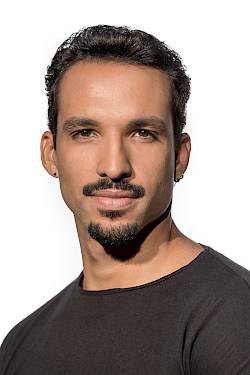
Cristian Alex Assis,
Cristian Alex Assis
Cristian Alex Assis is a native of Brazil. He studied at the Mannheim University of Music and Performing Arts, on a scholarship awarded by the Brasilia International Dance Seminar. He was a member of the Munich-based Bavarian State Ballet from 2010 to 2012, and came to Ballett Zürich for the 2012/13 season. Since then he has been seen in various roles including Wronski in Christian Spuck’s Anna Karenina, Tybalt in Spuck’s Romeo and Juliet and the drum major and the captain in Spuck’s Woyzeck, in further choreographies by William Forsythe andEdward Clug and in Martin Schläpfer’s Forellenquintett. In the reconstruction of Swan Lake by Alexei Ratmansky he was seen as Rotbart.
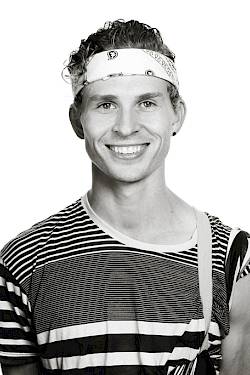
Tars Vandebeek,
Tars Vandebeek
Tars Vandebeek was born in Belgium, and studied at the Royal Ballet School of Antwerp. He won a gold medal at the International Competition of Dance in Biarritz, also earning the Biarritz City Award, and went on to perform for the Cannes Jeune Ballet and Gauthier Dance. After one year with the Junior Ballet, he joined the main company for the season 2014/15. He has already made a number of appearances on the Zurich stage, such as in Marco Goecke’s Deer Vision and as Levin in Christian Spuck’s Anna Karenina; and he danced the title role in Spuck’s Woyzeck.
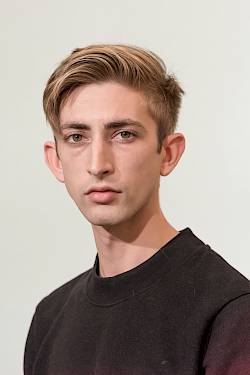
Eric Christison,
Eric Christison
Eric Christison was born in Canada, and trained at Canada’s National Ballet School in Toronto and the English National Ballet School in London. He was with the Finnish National Ballet from 2010 to 2013, where his performances included John Cranko’s Romeo and Juliet. His touring activities also took him to the Bolshoi Theatre, where he danced in Nijinsky’s Le Sacre du printemps. He joined Ballett Zürich for the 2013/14 season, and his performances to date have included Marco Goecke’s Deer Vision, the role of Paris in Christian Spuck’s Romeo and Juliet and in Balanchine’s The Four Temperaments (Melancholic).

Katja Wünsche,
Katja Wünsche
Katja Wünsche comes from Dresden and was trained at the Staatliche Ballettschule Berlin. She has won prizes at numerous ballet competitions. From 1999 to 2012 she danced in the Stuttgart Ballet, including as a principal dance from 2006. She danced leading roles in choreographies by John Cranko (Romeo und Julia, Der Widerspenstigen Zähmung, Onegin), John Neumeier (Endstation Sehnsucht, Die Kameliendame), Marcia Haydée (Dornröschen, La Sylphide, La fille mal gardée) and Christian Spuck (Lulu, Der Sandmann, Leonce und Lena, Das Fräulein von S.) and ballets by Forsythe, Kylián, León/Lightfoot and Goecke. In 2007 she was awarded the German Dance Prize Future (for promising young artists) and the German Theater Prize Der Faust. Katja Wünsche has been a first soloist with Ballett Zürich since the 2012/13 season. She has been seen in Zurich as Julia in Spuck’s Romeo und Julia, Lena in Leonce und Lena, Marie in Woyzeck, Anna Karenina and Kitty in Anna Karenina and Clara in Der Sandmann. She has also performed in choreographies by Sol León/Paul Lightfoot, Douglas Lee, Martin Schläpfer, Wayne McGregor and Marco Goecke. In 2014 she was awarded the «Tanzpreis der Freunde des Balletts Zürich».
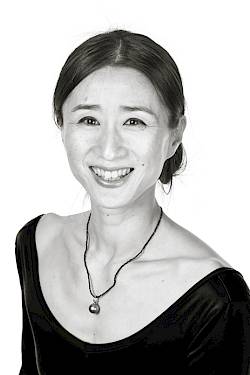
Yen Han a.G.,
Yen Han a.G.
Chinese-American dancer Yen Han studied with Stefan Mucsi and Paul Maure in Los Angeles, at the Hartford Ballet School, at the San Francisco Ballet, and at the Beijing Dance Academy. After engagements with the Jeune Ballet de France and the Ballet de Nice, she was engaged as a principal dancer in the Ballett Zürich in 1994, where she has proven to be one of the most versatile and charismatic dancers in a variety of leading roles. Heinz Spoerli choreographed Le Sacre du printemps, Peer Gynt, Daphnis et Chloé, Romeo and Juliet, and A Midsummer Night’s Dream for her. She worked with Mats Ek on Sleeping Beauty (Aurora), and at the Royal Swedish Opera on Romeo and Juliet (Juliet). Other important choreographers she has worked with include Nicholas Beriozoff, Hans van Manen, Jiří Kylián, William Forsythe, Mauro Bigonzetti, Twyla Tharp, Christopher Wheeldon, Patrice Bart, Lin Hwai Min, Sol León/Paul Lightfoot, Martin Schläpfer, and Filipe Portugal. She has been seen in works by Christian Spuck, as Juliet (Romeo and Juliet), Court Master (Leonce and Lena), Kitty (Anna Karenina), in Messa da Requiem and as the Clown (Nutcracker and Mouse King). In 2013 she was honored with the Dance Prize of the Friends of Ballett Zürich and the Outstanding Female Dancer prize at the Swiss Dance Awards.
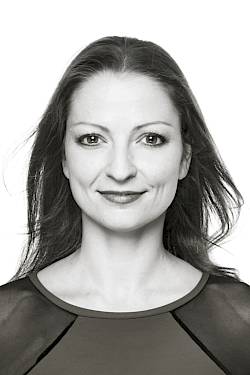
Galina Mihaylova,
Galina Mihaylova
The Bulgarian dancer Galina Mihaylova completed her education at the Bulgarian State Choreographic School and the Swiss Professional Ballet School, where she was a Nureyev Foundation scholarship holder. In the 1999/2000 season she became a member of the Ballett Zürich. She danced here in numerous choreographies by Heinz Spoerli. She has appeared as Effie (La Sylphide), Amor (Don Quixote), Helena (A Midsummer Night’s Dream), in Wäre heute morgen und gestern jetzt, as Odette/Odile (Swan Lake) and Henriette (Raymonda). She has also performed in ballets by William Forsythe, Jiří Kylián, Twyla Tharp, Uwe Scholz, and Jiří Bubeniček. She danced the Nurse in Romeo and Juliet, Margret in Woyzeck and Dolly in Anna Karenina (all by Christian Spuck). She has also appeared in choreographies by Wayne McGregor, Marco Goecke, and George Balanchine.
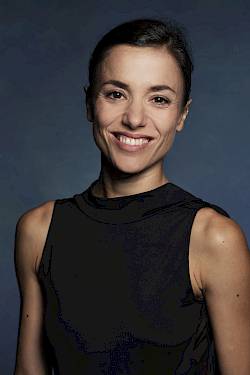
Giulia Tonelli,
Giulia Tonelli
Giulia Tonelli comes from Italy. She graduated from the Balletto di Toscana and the Ballet School of the Vienna State Opera. After her first engagement at the Vienna State Opera, she danced from 2002 to 2010 with the Royal Ballet of Flanders in Antwerp and from 2004 as a demi-soloist. There she danced Giselle (Petipa) as well as solo roles in choreographies of Forsythe, Balanchine, Kylián, Haydée and Spuck. She has been a member of Ballett Zürich since the 2010/11 season, where she has performed ballets by Spoerli, Goecke, McGregor, Lee, Forsythe, Kylián and Balanchine. She danced Julia in Christian Spuck’s Romeo und Julia, Lena in Spuck’s Leonce und Lena and Betsy in Anna Karenina. In Alexei Ratmansky’s Schwanensee reconstruction she danced in the Pas de trois and she also performed in Forsythe’s Quintett and Spuck’s Messa da Requiem. Last season’s highlights include Emergence by Crystal Pite and Gretchen in Edward Clug’s Faust. During the «Junge Choreografen» series she presented the works Mind Games and Klastos together with Mélissa Ligurgo. In 2013 she was awarded the Giuliana Penzi Prize. In 2017 she received the «Tanzpreis der Freunde des Balletts Zürich».
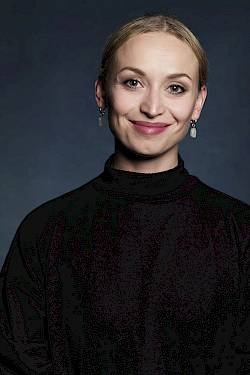
Irmina Kopaczynska,
Irmina Kopaczynska
Irmina Kopaczynska was born in Poland. She studied at the Polish National Ballet School Poznan. She won several prizes in the Polish National Ballet Competition. She also took part in the «Premio Roma» and the «Prix de Lausanne». After two seasons with the Junior Ballett, she became a member of Ballett Zürich starting with the 2011/12 season. She danced the Silver Fairy in Mats Ek’s Dornröschen, Betsy in Christian Spuck’s Anna Karenina, and the Nursemaid in Spuck’s Romeo und Julia. She has also appeared in choreographies by William Forsythe (In the middle, New Sleep), Hans van Manen (Kammerballett), Jiří Kylián (Gods and Dogs, Bella Figura), Iacopo Godani, Edward Clug, Marco Goecke (including the Mother in Nijinski), Douglas Lee, and Crystal Pite.

Wei Chen,
Wei Chen
Wei Chen comes from the USA and received his education at the Boston Ballet School, the Margo Marshall School of Ballet, the Walnut Hill School, and the Houston Ballet’s Ben Stevenson Academy. At the Royal Ballet of Flanders he danced in Marcia Haydées Schwanensee (Siegfried) and Dornröschen (Prince Desiré) as well as in Cranko’s Onegin (Lensky). He has also appeared in choreographies by Balanchine, Bournonville, Dawson, Forsythe, Godani, McGregor, Nureyev, Pite, Stevenson, and Wheeldon. He has been a member of Ballett Zürich since the 2013/14 season and has performed in choreographies by Douglas Lee, Jiří Kylián, Marco Goecke, Edward Clug, William Forsythe, and Crystal Pite, among others. He also danced Romeo and Mercutio in Spuck’s Romeo und Julia, Benno in Ratmansky’s Schwanensee, Coppelius in Spuck’s Der Sandmann, and Albrecht in Patrice Bart’s Giselle.
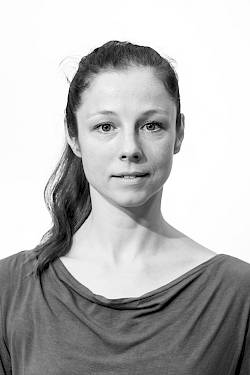
Eva Dewaele,
Eva Dewaele
Eva Dewaele is from Belgium. After completing training at the Royal Ballet School in Antwerp, she was engaged by the Hessisches Staatstheater Wiesbaden, the Theater Luzern, the Opera Göteborg, the Opéra de Lyon, the Cullberg Ballet and the Royal Ballet of Flanders. She has danced in choreographies by William Forsythe, Mats Ek and Jiří Kylián as well as in world premieres by Jacopo Godani, Douglas Lee, David Dawson and Christian Spuck. Eva Dewaele has also appeared in several feature films. With the start of the 2012/13 season she became a member of Ballett Zürich and was also ballet master of the Junior Ballett. She danced Lady Capulet in Christian Spuck’s Romeo und Julia, Rosetta in Leonce und Lena and the Dark Lady in Spuck’s Sonett. As a choreographer, Eva Dewaele created the piece Mit Blick auf for the Hodler retrospective of the Fondation Beyeler and presented the piece Miss(es) as a part of the «Junge Choreografen» series. Her choreography Passing by was created for the Junior Ballett. She has been a ballet master of Ballett Zürich since the 2014/15 season. She staged the production of Christian Spuck’s Anna Karenina at the Stanislavski Theatre in Moscow, the Korean National Ballet, and the Bayerisches Staatsballett.
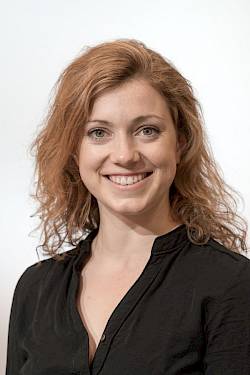
Nora Dürig,
Nora Dürig
Nora Dürig, who is Swiss, was educated at the ballett school of the Opera House Zürich and at the ballett school of the Hamburger Ballett. She was a member of Ballett Zürich from 2008 to 2015 after being with the Junior Ballett for one season. She danced leading roles in Heinz Spoerlis Der Tod und das Mädchen, Wäre heute morgen und gestern jetzt and Goldberg-Variationen, Mats Eks Sleeping beauty (Aurora), Kylians Bella Figura and Falling Angels as well as Hans van Manens Frank Bridge Variations. Furthermore she was part of choreographies by William Forsythe, Edward Clug, Martin Schläpfer and Marco Goecke. She presented her choreography Frühlingswind in the series of «Junge Choreografen». As a guest she will be taking over the part of the queen mother in the Schwanensee reconstruction by Alexei Ratmansky.
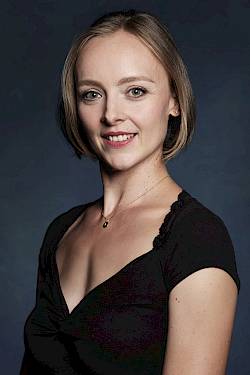
Mélanie Borel,
Mélanie Borel
Mélanie Borel comes from France. She studied at the École Nationale Supérieure de Danse in Marseille and at the École de Danse de l’Opéra de Paris. Engagements have taken her to the Ballet de l’Opéra National de Bordeaux and, from 2005 to 2008, to the Peter Schaufuss Ballet in Denmark. She has been a member of Ballett Zürich since the 2008/09 season and has performed as a soloist in choreographies by Twyla Tharp, Heinz Spoerli, and Mats Ek. She was the Haushofmeister in Spuck’s Leonce und Lena and danced the «Cholerisch» variation in Balanchine’s The Four Temperaments. In addition, she has appeared in choreographies by Marco Goecke, Douglas Lee, Jiří Kylián, Wayne McGregor, Martin Schläpfer, Hans van Manen, Edward Clug and Crystal Pite.
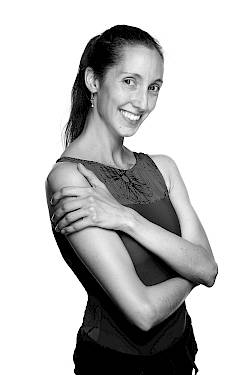
Alba Sempere Torres,
Alba Sempere Torres
Alba Sempere Torres is Spanish. She trained at the Institut del Teatro in Barcelona and at the John Cranko School in Stuttgart. She won the Castellón Ballet Competition and danced with the Vienna State Opera Ballet, the Staatsballett Berlin and, from 2004 to 2008 with the Bayerisches Staatsballett. She has appeared in choreographies by Jo Strømgren, Peter Wright, Jiří Kylián, Vladimir Malakhov, John Neumeier and Mats Ek, among others. She has belonged to Ballett Zürich since the 2014/15 season, where she has been seen in choreographies by Jiří Kylián, Hans van Manen, George Balanchine, Patrice Bart, Martin Schläpfer, and Christian Spuck.
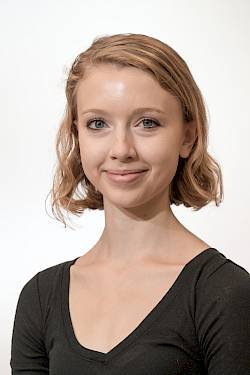
Lauren Baznik,
Lauren Baznik
Lauren Baznik, who is from the USA, studied at the Academy of Dance Arts in Downers Grove, at the John Cranko Schule in Stuttgart and at the Académie Princesse Grace in Monte Carlo. She won the regional round of the 2010 Youth America Grand Prix in Chicago, and was a finalist in the national finals in New York. After one year with the Junior Ballet, she joined the main Ballett Zürich company for the 2013/14 season
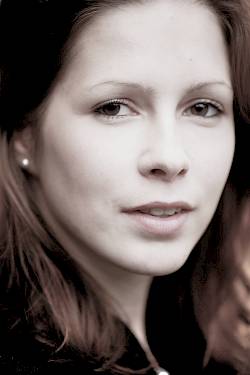
Josiane Marfurt,
Josiane Marfurt
Die Schweizer Pianistin Josiane Marfurt erhielt ihren ersten Klavierunterricht von Yukio Oya, einem Schüler von Claudio Arrau. Nach kurzer Zeit wurde sie in das Kompositionsförderprogramm von Yamaha Europe aufgenommen. Nach drei Jahren in diesem Förderprogramm erhielt sie den ersten Preis für die Komposition ihrer Klaviersonate. In diesen Jahren gewann Josiane Marfurt auch mehrere erste Preise bei «Jugend musiziert. Später folgten weitere Preise bei internationalen Wettbewerben, u.a. beim Concours Géza Anda und beim ARD-Musikwettbewerb. Josiane Marfurt studierte bei Konstantin Scherbakov an der Hochschule für Musik und Theater Zürich, bei Gerhard Oppitz an der Münchner Musikhochschule sowie bei Homero Francesch in Zürich. Gemeinsam mit dem Geiger Sasha Rozhdestvensky spielte sie das Gesamtwerk für Violine und Klavier von Pjotr Tschaikowski und Maurice Ravel ein. Die Ravel-Aufnahme wurde vom französischen Magazin «Classica» 2012 mit dem «Choc du mois» ausgezeichnet. Konzerteinladungen führten die Pianistin durch die ganze Schweiz, nach Deutschland, Österreich, Italien, Frankreich, Spanien, England, Polen, Japan und Russland. Josiane Marfurt arbeitete mit verschiedenen Orchestern in ganz Europa zusammen, u.a. mit dem Akademischen Orchester Zürich, dem Berner Kammerorchester, dem Symphonieorchester des Bayerischen Rundfunks und dem Moscow Chamber Orchestra.



